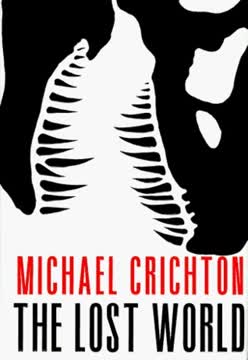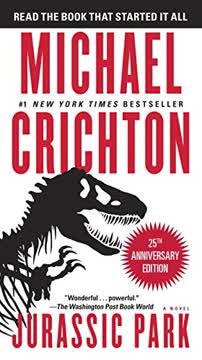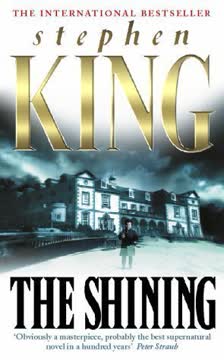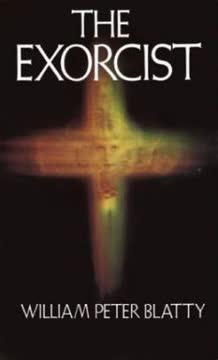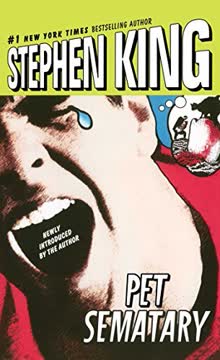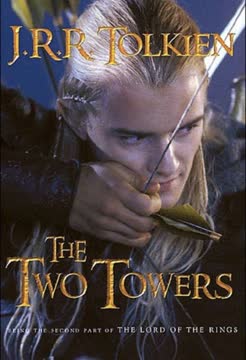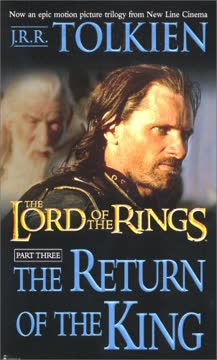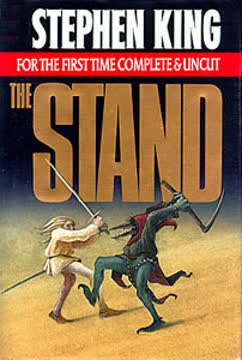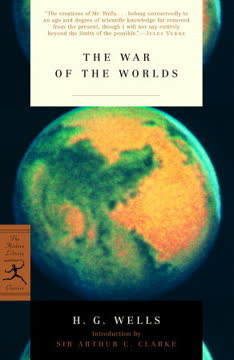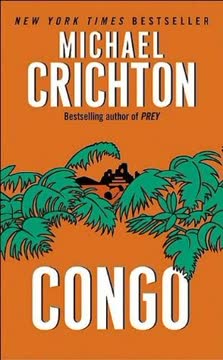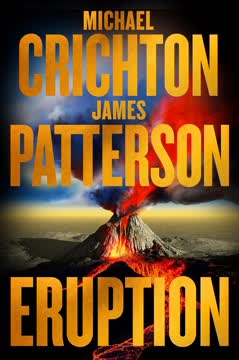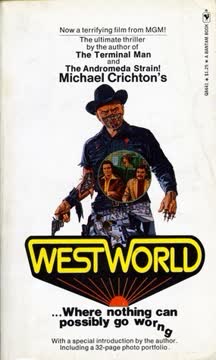Plot Summary
Extinction's Unanswered Questions
The novel opens with a meditation on extinction, both as a scientific puzzle and a looming threat for humanity. Ian Malcolm, a mathematician and chaos theorist, challenges the prevailing theories about the dinosaurs' demise, suggesting that behavioral changes, not just catastrophic events, may have led to their extinction. He frames extinction as a continuous, often behavior-driven process, and wonders if humanity is on a similar path. This sets the philosophical tone for the story, linking the fate of dinosaurs to the potential self-destruction of modern civilization.
The Lost World Hypothesis
Paleontologist Richard Levine, inspired by Malcolm's ideas, becomes obsessed with the possibility that dinosaurs survived extinction in some remote location. Despite skepticism, he investigates persistent rumors of strange animal sightings in Costa Rica. Levine's wealth and arrogance drive him to plan an expedition, recruiting engineer Doc Thorne, field biologist Sarah Harding, and two precocious students, Kelly and Arby. The "Lost World" is no longer just a metaphor—it becomes a literal quest to find a hidden population of dinosaurs, setting the adventure in motion.
Aberrant Forms Discovered
Levine's investigation in Costa Rica uncovers a mysterious carcass—an animal with dinosaurian features, quickly destroyed by authorities. The government's secrecy and the presence of a strange disease among locals hint at a cover-up. Levine's suspicions are confirmed by a tissue sample sent to Malcolm, which, upon analysis, reveals a genetically engineered creature, tagged and tracked, likely a product of InGen's secret experiments. The evidence is enough to convince Malcolm and Thorne that a "Site B" exists, where dinosaurs were bred and released.
Secrets and Denials
The backstory of InGen, the company behind Jurassic Park, is revealed. After the disaster on Isla Nublar, InGen's operations were supposedly shut down, but rumors persist of a second site—Site B—where the real manufacturing took place. Malcolm, bound by nondisclosure agreements, publicly denies the existence of living dinosaurs, but privately investigates with Levine. Industrial espionage, led by the unscrupulous Lewis Dodgson of Biosyn, adds another layer of danger, as rival interests seek to exploit the island's secrets.
The Expedition Assembles
Levine disappears on a solo mission to the suspected island, prompting Thorne, Malcolm, Eddie Carr (a mechanic), and the stowaway students, Kelly and Arby, to mount a rescue. Sarah Harding is summoned from Africa. The team brings advanced vehicles and equipment, including a reinforced trailer and a high observation platform ("high hide"). Meanwhile, Dodgson and his team plot their own incursion, hoping to steal dinosaur eggs for profit. The stage is set for multiple parties to converge on Isla Sorna, the "island of the Five Deaths."
Island of the Five Deaths
The expedition lands on Isla Sorna, a volcanic, jungle-covered island. They quickly encounter living dinosaurs—herbivores and small scavengers—confirming their suspicions. The island is revealed as a vast, abandoned InGen facility, with a network of roads, a power plant, and a deserted worker village. The team sets up base and begins to explore, using technology as a double-edged sword to track Levine and observe the dinosaur populations. The sense of wonder is quickly tempered by the realization that the ecosystem is unstable and dangerous.
Dinosaurs in the Wild
The team witnesses complex dinosaur behaviors: herds of apatosaurs and triceratops, defensive groupings, and predator-prey interactions. Levine is enthralled, seeing the island as a unique opportunity to study extinction in real time. Malcolm, however, is wary, noting the unnatural density of predators and the absence of adult herbivores. The high hide becomes their vantage point for observing the valley, but also a symbol of their precarious safety. The children, Kelly and Arby, prove resourceful, hacking into the island's surveillance network.
Predators and Prey
The team's presence disrupts the island's delicate balance. They encounter velociraptors—intelligent, pack-hunting predators—and witness their chaotic, violent social structure. Levine narrowly escapes a raptor attack, while Eddie and the others face increasing danger. The tyrannosaurs, including a nurturing pair with a nest, demonstrate both parental care and territorial aggression. The team's attempts to observe without interfering prove futile, as their actions inadvertently provoke the island's most dangerous inhabitants.
The High Hide and Observation
From the high hide, the team records dinosaur interactions, debates evolutionary theory, and reflects on the limits of scientific objectivity. Malcolm expounds on complexity theory, self-organization, and the role of behavior in extinction. The children's intelligence and initiative become crucial, especially as the adults are drawn into crises. The high hide, meant as a safe observation post, becomes a trap when the raptors discover it, leading to a desperate fight for survival.
Sabotage and Rivalry
Dodgson and his Biosyn team arrive, intent on stealing dinosaur eggs. Their reckless actions—using a sonic weapon to drive off dinosaurs and stealing from nests—trigger violent responses from the animals. Dodgson's betrayal of Sarah Harding nearly results in her death, and his theft of a tyrannosaur egg leads to a brutal attack by the adult rexes. The human threat proves as deadly as the dinosaurs, as greed and rivalry escalate the chaos on the island.
The Tyrannosaur's Revenge
Dodgson's theft of a tyrannosaur egg results in a relentless pursuit by the adult rexes. The team's rescue of an injured baby rex, intended as an act of compassion, instead provokes the parents' wrath. The tyrannosaurs attack the trailer, pushing it over a cliff in a spectacular sequence of destruction. The survivors are forced to improvise, using their wits and limited resources to escape both the dinosaurs and the collapsing infrastructure of the island.
Raptors Unleashed
The velociraptors, emboldened and hungry, attack the high hide and the team's vehicles. Their intelligence and ferocity are on full display as they coordinate assaults, break into shelters, and pursue the humans relentlessly. Eddie is killed, Arby is captured in a rolling cage, and the group is scattered. The raptor nest is discovered to be a scene of chaos and cannibalism, with no social order or successful rearing of young—a failed experiment in dinosaur behavior.
Chaos in the Night
As night falls, the survivors are besieged by raptors and other dangers. The team uses nonlethal weapons, clever distractions, and the children's computer skills to escape from the worker village. Sarah and Kelly rescue Arby, while Thorne and Levine fight off raptors in a harrowing chase. The group's scientific mission is abandoned in favor of sheer survival, as the island descends into chaos and the boundaries between observer and participant vanish.
Survival and Sacrifice
The team suffers casualties—Eddie is killed, and Dodgson meets a gruesome end at the hands of the tyrannosaurs and their young. The survivors are forced to confront the consequences of their actions, both intentional and accidental. The children's bravery and ingenuity are instrumental in the group's escape. The adults, especially Malcolm and Harding, reflect on the limits of control and the unpredictability of complex systems.
The Prion Plague
The true cause of the island's instability is revealed: a prion disease, contracted from contaminated sheep protein used in the dinosaurs' feed, has spread through the population. The disease, DX, causes early death among herbivores, supporting an unnaturally high number of predators and leading to ecosystem collapse. The compys, as scavengers, spread the infection further. The island is not a pristine lost world, but a failed experiment doomed by human error and ignorance.
Escape from Isla Sorna
With the help of Sarah's resourcefulness and Kelly's computer skills, the survivors locate a hidden boathouse and escape the island by water. The helicopter rescue fails, but the group's determination and teamwork prevail. As they leave Isla Sorna behind, they reflect on the lessons learned and the dangers of unchecked scientific ambition. The fate of the island and its inhabitants is left ambiguous, a warning about the limits of human control over nature.
Lessons of Extinction
In the aftermath, Malcolm and the others debate the meaning of their experience. The island's collapse is attributed not to a single catastrophe, but to a cascade of behavioral and ecological failures—both dinosaur and human. The story ends with a meditation on the nature of extinction, the dangers of technological hubris, and the enduring mystery of life's complexity. The survivors return home, changed by their encounter with the lost world, and haunted by the question of whether humanity will learn from the past or repeat its mistakes.
Characters
Ian Malcolm
Malcolm is the intellectual heart of the novel, a mathematician whose experience with Jurassic Park has left him physically and psychologically scarred. He is deeply skeptical of human attempts to control nature, and his lectures on chaos theory, self-organization, and extinction frame the story's philosophical questions. Malcolm's wit and pessimism mask a genuine concern for the future of humanity. He is both a reluctant participant and a voice of warning, constantly reminding others of the unpredictability of complex systems. His development is marked by a shift from detached theorist to active survivor, forced to confront the limits of his own knowledge and the consequences of human hubris.
Richard Levine
Levine is brilliant, wealthy, and insufferably arrogant. His obsession with finding living dinosaurs propels the plot, but his lack of caution and empathy endangers himself and others. Levine's relationships are marked by rivalry (with Malcolm), manipulation (of Thorne and the students), and a single-minded pursuit of scientific glory. Psychologically, he is a classic obsessive, unable to see the broader consequences of his actions. Over the course of the novel, Levine is forced to confront his own limitations and the ethical dilemmas of scientific exploration.
Sarah Harding
Sarah is a renowned animal behaviorist, tough, independent, and highly competent. Her experience in the African savannah gives her unique insight into predator-prey dynamics and survival. She serves as a role model for Kelly and a stabilizing force for the group. Sarah's psychological resilience and practical skills are crucial in moments of crisis. Her relationship with Malcolm is complex, blending professional respect, past romance, and mutual reliance. She embodies the novel's theme of adaptability and the importance of real-world experience over abstract theory.
Doc Thorne
Thorne is a retired professor and mechanical genius, responsible for the expedition's vehicles and equipment. He is gruff, practical, and deeply loyal to his friends and students. Thorne's engineering mindset contrasts with the theoretical approaches of Malcolm and Levine. He is a father figure to Kelly and Arby, and his courage and quick thinking save lives. Thorne's development is marked by increasing frustration with academic egos and a growing appreciation for the unpredictability of the natural world.
Eddie Carr
Eddie is Thorne's assistant, a skilled mechanic and inventor. He is practical, cautious, and deeply concerned for the safety of the group. Eddie's heroism is most evident in his attempts to rescue others, ultimately sacrificing himself to save the children. His death underscores the dangers of the island and the cost of human error. Eddie represents the everyman, caught between the ambitions of scientists and the realities of survival.
Kelly Curtis
Kelly is a thirteen-year-old student, smart, resourceful, and eager to prove herself. She struggles with self-doubt and the dismissive attitudes of adults, especially regarding her interest in science and math. Kelly's friendship with Arby and admiration for Sarah Harding drive her development. She plays a pivotal role in the group's survival, using her computer skills and quick thinking to solve problems. Kelly's journey is one of empowerment, as she learns to trust her abilities and assert her value.
Arby Benton
Arby is an eleven-year-old prodigy, skipped ahead in school and socially awkward. He is a computer whiz, whose hacking skills are essential to the team's navigation and survival. Arby's intelligence is both a strength and a source of vulnerability, as he struggles with fear and the expectations of others. His friendship with Kelly provides emotional grounding. Arby's development is marked by moments of bravery and self-reliance, as he overcomes his anxieties and contributes to the group's escape.
Lewis Dodgson
Dodgson is the head of research at Biosyn, a rival genetics company. He is ruthless, manipulative, and willing to endanger others for profit. Dodgson's actions—sabotage, theft, and betrayal—escalate the dangers on the island. Psychologically, he is a classic corporate villain, lacking empathy and blinded by ambition. His gruesome fate at the hands of the tyrannosaurs serves as poetic justice and a warning about the consequences of unchecked greed.
Howard King
King is Dodgson's assistant, a failed scientist drawn into criminal activity by desperation. He is anxious, indecisive, and ultimately doomed by his inability to stand up to Dodgson. King's psychological profile is one of passive complicity, illustrating how ordinary people can become enablers of greater evils. His death at the hands of the raptors is both tragic and inevitable.
The Dinosaurs
The dinosaurs themselves are characters—complex, unpredictable, and often misunderstood. The tyrannosaurs display both parental care and lethal aggression. The raptors are intelligent but socially chaotic, lacking the learned behaviors of their ancestors. The compys, maiasaurs, and carnotauruses each embody different aspects of the island's failed ecosystem. The dinosaurs serve as both subjects of scientific wonder and agents of chaos, reflecting the novel's themes of complexity, adaptation, and the limits of control.
Plot Devices
Dual Narrative Structure
The novel alternates between the scientific/philosophical debates of Malcolm and Levine and the action-driven survival narrative on Isla Sorna. This dual structure allows Crichton to explore both the intellectual questions of extinction and the visceral realities of chaos and danger. The convergence of multiple parties—scientists, children, and corporate saboteurs—creates intersecting plotlines that escalate the stakes and complexity.
Foreshadowing and Irony
Crichton uses foreshadowing extensively, especially through Malcolm's lectures on chaos theory and extinction. The warnings about the unpredictability of complex systems and the dangers of human interference are repeatedly ignored, leading to disaster. Irony pervades the narrative: the very behaviors meant to ensure survival (observation, rescue, compassion) often trigger greater peril. The "Lost World" is not a sanctuary, but a failed experiment.
Technology as Double-Edged Sword
Advanced technology—vehicles, surveillance systems, nonlethal weapons—both enables and endangers the characters. The reliance on technology creates a false sense of security, quickly shattered by the island's unpredictability. The children's hacking skills are crucial, but the failure of equipment and the misuse of scientific knowledge (e.g., prion-contaminated feed) drive the plot's central crises.
Behavioral Complexity and Self-Organization
The novel's central plot device is the application of chaos and complexity theory to both dinosaur and human behavior. The collapse of the island's ecosystem is not due to a single event, but to cascading failures in social structure, disease, and adaptation. The dinosaurs' inability to learn proper behaviors, the spread of prion disease, and the humans' disruptive actions all contribute to the unraveling of order. The narrative structure itself mirrors the unpredictability and emergent properties of complex systems.
Symbolism and Motif
Recurring motifs—territoriality, parental care, predation, and extinction—underscore the novel's themes. The "edge of chaos" is both a scientific concept and a lived reality for the characters, who must adapt or perish. The island itself is a symbol of human ambition and folly, a microcosm of the dangers of unchecked technological power.
Analysis
The Lost World is both a thrilling adventure and a meditation on the limits of human knowledge and control. Crichton uses the spectacle of living dinosaurs to explore deep questions about extinction, adaptation, and the unpredictability of complex systems. The novel critiques the arrogance of scientists and corporations who believe they can master nature, only to unleash chaos and destruction. The failed ecosystem of Isla Sorna, plagued by disease and behavioral collapse, serves as a warning about the unintended consequences of technological ambition. The story's ultimate lesson is one of humility: life is more complex, interconnected, and fragile than we can ever fully understand. Survival depends not on domination, but on adaptability, cooperation, and respect for the unknown. The Lost World challenges readers to reconsider humanity's place in the natural order, and to recognize that the greatest threats to survival may come not from external catastrophes, but from our own behavior.
Last updated:
FAQ
Synopsis & Basic Details
What is The Lost World about?
- A Secret Dinosaur Island: The Lost World follows mathematician Ian Malcolm and paleontologist Richard Levine as they uncover a hidden island, Isla Sorna, where dinosaurs secretly thrive after the collapse of InGen's original Jurassic Park project. This "Site B" was InGen's dinosaur manufacturing facility, now an uncontrolled ecosystem.
- A Race Against Exploitation: The narrative centers on two competing expeditions: Malcolm's team, including field biologist Sarah Harding, engineer Doc Thorne, and two resourceful teenagers, Kelly and Arby, who aim to observe and understand the island's unique ecology; and a rival team led by the ruthless Lewis Dodgson of Biosyn, who seeks to steal dinosaur eggs for corporate profit.
- Survival in a Chaotic Ecosystem: The story quickly devolves into a desperate struggle for survival as both human teams face the island's dangerous inhabitants—intelligent velociraptors, territorial tyrannosaurs, and other prehistoric creatures. It explores themes of scientific ethics, the unpredictability of nature, and the consequences of human interference.
Why should I read The Lost World?
- Deep Dive into Chaos Theory: Readers interested in the philosophical underpinnings of scientific unpredictability will find Ian Malcolm's ongoing commentary on chaos theory and self-organizing systems particularly engaging, offering a rich intellectual layer to the thrilling plot.
- Intense Survival Thriller: Beyond the science, the book delivers relentless suspense and action, with multiple harrowing encounters between humans and dinosaurs. It's a masterclass in building tension and depicting desperate escapes, making it a page-turner for fans of adventure and horror.
- Critique of Scientific Hubris: Crichton uses the "lost world" as a powerful allegory to critique unchecked technological ambition and corporate greed, prompting readers to consider the ethical responsibilities of scientific discovery and the potential for humanity to cause its own extinction.
What is the background of The Lost World?
- Post-Jurassic Park Sequel: The Lost World is a direct sequel to Jurassic Park, picking up years after the disaster on Isla Nublar. It explores the lingering rumors and cover-ups surrounding InGen's failed dinosaur cloning project, establishing a secret "Site B" as the true origin of the dinosaurs.
- Real-World Extinction Debates: Crichton grounds the fictional premise in contemporary scientific debates about extinction, particularly the K-T boundary event that wiped out the dinosaurs. Ian Malcolm's lectures draw on real theories from the Santa Fe Institute, linking the novel's events to actual scientific discourse on complexity and evolution.
- Technological and Ethical Concerns: The novel reflects 1990s anxieties about genetic engineering, corporate espionage, and environmental impact. It highlights the potential for biotechnology to be misused for profit, and the difficulty of controlling complex systems once they are unleashed, echoing real-world concerns about emerging technologies.
What are the most memorable quotes in The Lost World?
- "Sequelae are inherently unpredictable." (Ian Malcolm, Introduction): This quote, attributed to Malcolm in the book's introduction, encapsulates the core theme of chaos theory and the unpredictable consequences of actions, especially human interference with complex natural systems. It foreshadows the entire plot, where every human attempt to control or exploit the island leads to unforeseen and often disastrous outcomes.
- "Life is a complex system... Fitness landscapes. Adaptive walks. Boolean nets. Self-organizing behavior. Poor man. Ouch! What are you doing there?" (Ian Malcolm, Chapter: Malcolm): This quote, delivered by a morphine-addled Malcolm, brilliantly summarizes his entire philosophical framework. It highlights the intricate, interconnected nature of life and evolution, contrasting the abstract beauty of these theories with the immediate, painful reality of his physical injuries, underscoring the novel's blend of intellectual depth and visceral action.
- "All your life, other people will try to take your accomplishments away from you. Don't you take it away from yourself." (Sarah Harding, Chapter: Escape): This powerful advice from Sarah Harding to Kelly Curtis is a pivotal moment of mentorship and empowerment. It speaks to themes of self-worth, intellectual honesty, and the struggle against external validation, particularly relevant for a young, intelligent girl in a male-dominated scientific world. It's a direct counterpoint to the academic and corporate posturing seen throughout the book.
What writing style, narrative choices, and literary techniques does Michael Crichton use?
- Scientific Realism and Pacing: Crichton employs a journalistic, almost documentary-like style, integrating scientific explanations and technical details seamlessly into the narrative. This creates a sense of verisimilitude, making the fantastical premise feel plausible. His prose is direct and unadorned, focusing on clear action and rapid pacing to maintain high suspense.
- Multiple Perspectives and Shifting Focus: The narrative frequently shifts between characters, offering diverse viewpoints on the unfolding events. This allows Crichton to explore different facets of the island's dangers and the characters' reactions, from Levine's scientific obsession to Kelly's youthful fear and ingenuity. The shifts also build tension by showing parallel threats converging.
- Epigraphs and Chapter Titles: Each major section of the book is prefaced with an epigraph from Ian Malcolm, often a cryptic statement about chaos theory or complex systems. These serve as thematic anchors, foreshadowing the events and providing a philosophical lens through which to interpret the escalating chaos. The chapter titles, like "Aberrant Forms" or "Gambler's Ruin," also hint at the scientific concepts being explored.
Hidden Details & Subtle Connections
What are some minor details that add significant meaning?
- Levine's German Books and the "Five Deaths": The detail that Levine has many German books, including "Die Fünf Todesarten" (The Five Ways of Death), initially seems like a quirky character trait. However, it subtly foreshadows the German mining company's lease of Isla Sorna and the local name for the island chain, "The Five Deaths," linking historical exploitation to the island's current dangers and Levine's specific research interests. This connection is crucial for Malcolm to deduce the island's identity.
- The InGen Computer's Origin: Arby's discovery that Levine bought an old InGen CAD-CAM computer, which still contained recoverable files due to an incomplete reformat, is a seemingly technical detail. This highlights InGen's hasty and incomplete cover-up, revealing that their attempts to erase their past were flawed, and providing the critical data (Site B legends, production notes) that allows the team to understand the island's true purpose and dangers.
- The Raptor's Key-Snatching Incident: During the attack on the high hide, a raptor gets the cage key tangled in its jaw's elastic loop. This seemingly minor, almost comical detail becomes crucial later when Sarah and Kelly realize they need that specific key to free Arby from the cage, turning a moment of animal aggression into a vital plot point for their escape. It underscores the unpredictable nature of the "lost world" where even small events have major consequences.
What are some subtle foreshadowing and callbacks?
- Malcolm's Delirious Mumbling: Sarah Harding recalls Malcolm mumbling dinosaur names like "raptors" and "compys" in his post-surgery delirium. This is a subtle callback to the events of Jurassic Park, hinting at his traumatic past experience without explicitly revealing it, and establishing his deep, personal fear of these specific dinosaurs long before they are encountered on Isla Sorna.
- The "Aberrant Forms" Terminology: Guitierrez's use of the official term "aberrant forms" for the dinosaur carcasses is a bureaucratic euphemism that foreshadows the government's deliberate obfuscation and denial of the truth about the island. It highlights the human tendency to downplay or mislabel inconvenient realities, a theme central to the novel's critique of scientific and corporate ethics.
- Thorne's "Thorny Problems" and the Cast: Doc Thorne's past as a professor who challenged students with seemingly impossible engineering problems (like dropping eggs from a tower with only toilet paper tubes) is a subtle foreshadowing of the ingenious, on-the-fly solution he devises for the baby tyrannosaur's broken leg. The irony is that he faces his own "thorny problem" in a real-life, high-stakes scenario, demonstrating his practical genius under pressure.
What are some unexpected character connections?
- Sarah Harding's Father as a Zoo Vet: The revelation that Sarah Harding's father was a bird specialist vet at the San Diego Zoo provides an unexpected, yet logical, foundation for her extensive knowledge of comparative anatomy and animal care. This background explains her immediate, compassionate, and skilled response to the injured baby tyrannosaur, connecting her personal history to her professional competence in a way that deepens her character.
- Dodgson's Past with Nedry and InGen: Lewis Dodgson's frustrated attempts to acquire InGen's technology, including paying Dennis Nedry (the saboteur from Jurassic Park), reveals a long-standing, ruthless ambition. This connection shows that Dodgson's current actions on Isla Sorna are not isolated incidents but part of a continuous pattern of industrial espionage and unethical behavior, linking the antagonist directly to the original disaster.
- Malcolm's Unseen Influence on Levine: Despite their frequent arguments and Malcolm's initial dismissal of Levine's "Lost World" hypothesis, it's clear that Malcolm's chaos theory lectures profoundly influenced Levine's pursuit of living dinosaurs. Levine's initial interruption of Malcolm's lecture and his later attempts to "prove" Malcolm's theories demonstrate a complex intellectual dependency, even amidst their personal rivalry.
Who are the most significant supporting characters?
- Marty Guitierrez: A quiet, bearded field biologist in Costa Rica, Guitierrez serves as the initial point of contact for Levine's investigation. His role is crucial in confirming the existence of "aberrant forms" and revealing the Costa Rican government's cover-up and the involvement of Biosyn. He provides the first concrete evidence that fuels Levine's obsession and the subsequent expedition.
- Beverly: Malcolm's assistant, Beverly, initially appears as a minor character handling administrative tasks. However, her description of the "Chaos Quarterly" photographers who broke into Malcolm's office is a critical detail that alerts Malcolm to Dodgson's espionage, directly influencing his decision to join Thorne's rescue mission.
- Romelia: Levine's housekeeper, Romelia, is only mentioned briefly, but her Post-it note about "Lobster bisque, baby organic greens, seared ahi tuna" waiting for Levine highlights his privileged, almost detached lifestyle. This detail contrasts sharply with the harsh realities of the island and underscores Levine's academic ivory tower existence, making his unpreparedness for the wild more pronounced.
Psychological, Emotional, & Relational Analysis
What are some unspoken motivations of the characters?
- Malcolm's Guilt and Redemption: Beneath Ian Malcolm's cynical exterior and intellectual detachment lies an unspoken motivation: a deep-seated guilt over his involvement in the original Jurassic Park disaster and a desire for redemption. His initial reluctance to return to Costa Rica, followed by his decisive action to rescue Levine, suggests he's driven by a need to prevent another catastrophe and perhaps atone for past mistakes, even if he won't admit it. This is a key aspect of Ian Malcolm's motivations.
- Levine's Craving for Validation: Richard Levine's arrogance and single-minded pursuit of discovery are fueled by an unspoken craving for ultimate scientific validation. His constant need to be "first" and "right," even at great personal risk, stems from a desire to prove his theories and secure his legacy, often overshadowing ethical considerations. This explains Richard Levine's motivations.
- Sarah Harding's Maternal Instincts: While Sarah Harding is portrayed as a tough, independent field biologist, her immediate and fierce protectiveness of the injured baby tyrannosaur reveals a deep, unspoken maternal instinct. This emotional response, contrasting with Malcolm's scientific detachment, drives her actions to save the infant, even when it puts the entire team at risk, highlighting a core aspect of Sarah Harding's character.
What psychological complexities do the characters exhibit?
- Malcolm's Existential Pessimism: Ian Malcolm exhibits a profound existential pessimism, born from his understanding of chaos theory and the inherent unpredictability of complex systems. His constant warnings and dark humor are a coping mechanism for his belief that humanity is inevitably heading towards self-destruction, making him both a prophet and a deeply conflicted individual. This psychological complexity makes Ian Malcolm's character compelling.
- Levine's Obsessive-Compulsive Drive: Richard Levine displays traits of obsessive-compulsive personality, evident in his meticulously organized apartment, his photographic memory for scientific details, and his relentless pursuit of the "Lost World." This drive, while enabling his brilliance, also blinds him to practical dangers and interpersonal dynamics, leading to his isolation and frequent disregard for others' safety.
- Kelly's Struggle with Imposter Syndrome: Kelly, despite her intelligence, grapples with imposter syndrome and the societal pressure to conform, especially as a young girl interested in math and science. Her initial shyness and self-doubt, contrasted with her later bravery and ingenuity, reveal the psychological burden of being underestimated and her journey towards self-acceptance and empowerment. This is a key aspect of Kelly Curtis's psychological development.
What are the major emotional turning points?
- Malcolm's Decision to Join the Rescue: A significant emotional turning point occurs when Malcolm, after repeatedly denying the existence of dinosaurs and expressing cynicism, decides to join Thorne's rescue mission for Levine. This shift from detached observer to active participant, driven by concern for his colleague and the potential for disaster, marks a crucial moment in his character arc and the story's escalation.
- Sarah's Encounter with the Stegosaurus: Sarah Harding's initial encounter with a living stegosaurus, after being thrown overboard, is an emotional turning point that shatters her scientific skepticism and forces her to confront the reality of the "Lost World." Her dazed astonishment and subsequent determination to find her colleagues underscore the profound impact of witnessing the impossible.
- Arby's Capture and Rescue: Arby's terrifying experience of being trapped in the cage and pursued by raptors, followed by his eventual rescue, is a major emotional turning point for him. It forces him to confront his fears directly and highlights his vulnerability, but also his resilience and the deep bond of friendship with Kelly and the protective instincts of the adults.
How do relationship dynamics evolve?
- Malcolm and Levine's Rivalrous Collaboration: The relationship between Ian Malcolm and Richard Levine evolves from a purely intellectual, often contentious, rivalry into a grudging, yet effective, collaboration. Despite their personality clashes and differing scientific approaches, their mutual respect for each other's intellect and their shared goal of understanding the island's ecology ultimately binds them, even if their bickering never truly ceases.
- Thorne's Paternal Role with the Kids: Doc Thorne's relationship with Kelly and Arby deepens from that of a gruff mentor to a fiercely protective paternal figure. His initial reluctance to involve them gives way to a profound sense of responsibility, culminating in his heroic efforts to save them, showcasing his loyalty and compassion.
- Sarah and Kelly's Mentorship Bond: The bond between Sarah Harding and Kelly Curtis evolves into a powerful mentorship. Sarah recognizes Kelly's intelligence and struggles, offering encouragement and practical advice that empowers Kelly to overcome her self-doubt. Kelly, in turn, looks up to Sarah as a role model, finding validation and inspiration in her strength and competence. This relationship is central to Kelly's character development.
Interpretation & Debate
Which parts of the story remain ambiguous or open-ended?
- The Long-Term Fate of Isla Sorna's Ecosystem: While the prion disease (DX) is identified as the cause of the dinosaurs' early deaths and the ecosystem's instability, the ultimate long-term fate of Isla Sorna remains ambiguous. It's unclear if the disease will eventually wipe out all the dinosaurs, if a new equilibrium will be found, or if human intervention (or lack thereof) will lead to further unforeseen consequences. The novel leaves the island's future open to interpretation, emphasizing nature's unpredictable resilience.
- The Extent of Global Dinosaur Sightings: Malcolm mentions reports of dinosaur carcasses showing up on other Pacific islands, implying the spread of InGen's creations beyond Isla Sorna. However, the full extent of this global phenomenon and its implications for the wider world are left unexplored. This ambiguity raises questions about whether the "lost world" is truly contained or if humanity faces a larger, unacknowledged threat.
- The Ethical Implications of the Survivors' Actions: The team's actions, particularly rescuing the baby tyrannosaur and leaving the island, are presented as necessary for survival but also carry ethical ambiguities. The debate over whether they should have interfered, or if their actions merely prolonged the inevitable, is left open. This encourages readers to consider the complex moral landscape of scientific intervention and the limits of human responsibility.
What are some debatable, controversial scenes or moments in The Lost World?
- Dodgson's "Frog Brain" Theory and the Tyrannosaur Attack: The scene where Dodgson relies on Baselton's theory that tyrannosaurs can only see movement (due to a "frog brain") is highly debatable. Levine vehemently dismisses this as "idiotic," and the subsequent attack on Baselton proves the theory fatally wrong. This moment sparks debate about the dangers of flawed scientific assumptions and the hubris of applying simplistic models to complex biological realities, especially when lives are at stake.
- The Decision to Rescue the Baby Tyrannosaur: The choice to rescue the injured baby tyrannosaur, despite Malcolm's warnings about interfering with the system, is a controversial emotional decision. While driven by compassion, it directly leads to the adult tyrannosaurs' attack on the trailer and Eddie's death. This scene forces readers to weigh the ethics of individual empathy against the broader ecological consequences, and whether such intervention is ever truly "right."
- Sarah Harding's Act of Pushing Dodgson to the Tyrannosaur: Sarah Harding's deliberate act of pushing Dodgson out from under the Explorer, effectively sacrificing him to the adult tyrannosaur, is a morally ambiguous and controversial moment. While Dodgson is a villain, Harding's action crosses a line, raising questions about justice, revenge, and the dehumanizing effects of extreme situations. It challenges the reader's perception of her as a purely heroic figure.
The Lost World Ending Explained: How It Ends & What It Means
- Escape and the Prion Plague Revelation: The Lost World ending explained sees the surviving members of Malcolm's team—Malcolm, Sarah, Thorne, Kelly, and Arby—escape Isla Sorna by boat, after the helicopter rescue fails. As they depart, Sarah and Malcolm reveal the true cause of the island's ecological collapse: a prion disease (DX) contracted by the dinosaurs from contaminated sheep protein in their feed. This disease causes early death in herbivores, leading to an unsustainable predator population and a chaotic, dying ecosystem. This is a crucial part of The Lost World ending explained.
- The Meaning of the Prion Plague: The prion plague is a powerful symbol of human hubris and the unforeseen consequences of technological shortcuts. InGen's attempt to "manufacture" life, coupled with cost-cutting measures and a lack of understanding of complex biological systems, created a self-destructive feedback loop. The island is not a "lost world" preserved in time, but a failed, diseased experiment, a microcosm of humanity's potential to destroy itself through ignorance and greed. This is a key theme in The Lost World.
- Malcolm's Final Reflections and Thorne's Counterpoint: The novel concludes with Malcolm's somber reflections on human destructiveness, suggesting humanity might be a "plague" destined for its own extinction, a behavioral collapse akin to the dinosaurs'. Thorne, however, offers a counterpoint, emphasizing the tangible realities of life—the sea, the sun, human connection—over abstract theories. This ending leaves readers with a complex, open-ended meditation on the future of humanity, the limits of science, and the enduring mystery of life and extinction, reinforcing the core themes in The Lost World.
Review Summary
The Lost World receives mixed reviews, with many readers finding it an exciting sequel to Jurassic Park, praising its action, suspense, and scientific content. Some appreciate the strong female characters and Malcolm's philosophical musings. However, others criticize the book for being less engaging than its predecessor, with bloated scientific explanations and unrealistic character decisions. The movie adaptation is generally considered inferior to the novel. Overall, readers appreciate Crichton's blend of science and thrilling dinosaur encounters, despite some flaws in pacing and character development.
Jurassic Park Series
Similar Books
Download PDF
Download EPUB
.epub digital book format is ideal for reading ebooks on phones, tablets, and e-readers.
